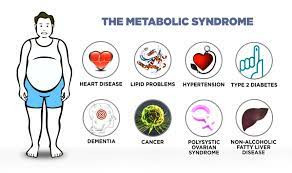Definisi
Dislipidemia merupakan kondisi dimana aliran darah memiliki tingkat lemak atau lipid dengan kondisi tidak normal. Seiring berjalannya waktu, dislipidemia dapat menyebabkan penumpukan lemak dan pengerasan pembuluh darah. Kolesterol merupakan bagian dari lemak yang terbentuk dari organ hati. Kolesterol juga hadir di dalam beberapa produk makanan. Tubuh menggunakan kolesterol pada penggunaan produksi sel, vitamin, dan hormon. Namun, kolesterol yang tinggi dapat menyebabkan permasalahan pada berbagai usia. Kolesterol terdiri dari 2 bentuk utama,. Bentuk pertama yaitu Low Density Lipoprotein (LDL) atau yang lebih dikenal sebagai kolesterol jahat, dapat menumpuk pada dinding pembuluh darah sehingga menyebabkan penyumbatan. Bentuk kedua yaitu High Density Lipoprotein (HDL) atau disebut sebagai kolesterol baik karena membantu membawa kolesterol LDL menjauh dari arteri.
Penyebab
Penyebab umum dari dislipidemia pada remaja dan anak-anak seperti obesitas, pola makan dan gaya hidup tidak sehat. Kondisi ini dapat diturunkan dari orang tua.
Faktor Resiko
Beberapa faktor risiko dislipidemia pada anak, di antaranya:
- Adanya riwayat keluarga dengan penyakit gangguan jantung, dimana pada usia 55 tahun atau lebih muda pada laki-laki dan 65 tahun atau lebih muda pada perempuan
- Memiliki orang tua dengan kolesterol yang tinggi
- Obesitas
- Diabetes
Gejala
Dislipidemia pada anak umumnya tidak menunjukkan adanya gejala dari kolesterol yang tinggi sehingga perlu pemeriksaan tingkat kolesterol yang rutin untuk mengetahuinya. Selain itu, perlu rutin dilakukan pemeriksaan bila anak tersebut memiliki faktor risiko yang tinggi.
Diagnosis
Diagnosis dari dislipidemia pada anak-anak dapat dilihat dari hasil pemeriksaan profil lemak menggunakan pemeriksaan darah. Pemeriksaan ini disarankan baik pada baik anak sehat maupun anak dengan riwayat keluarga dengan penyakit kolesterol. Pemeriksaan dilakukan sekali pada usia 9-11 tahun dan dilakukan pemeriksaan kembali pada usia 18-21 tahun. Anak-anak dengan risiko dislipidemia sebaiknya dilakukan pemeriksaan sedini mungkin (sekitar usia 2 tahun) dan secara rutin dilakukan pemeriksaan. Pada kondisi normal, nilai kolesterol sebagai berikut:
|
Tipe Kolesterol |
Tingkat Normal (mg/dl) |
Tingkat batas (mg/dll) |
Tingkat tidak normal (mg/dL) |
|
Kolesterol LDL |
< 110 |
110-129 |
≧ 130 |
|
Kolesterol HDL |
> 45 |
40-45 |
< 40 |
|
Total Kolesterol |
< 170 |
170-199 |
≧ 200 |
|
Trigliserida (0-9 tahun) |
< 75 |
75-99 |
≧ 100 |
|
Trigliserida (10-19 tahun) |
< 90 |
90-129 |
≧130 |
Tata Laksana
Menurut Society for Cardiovascular Angiography and Interventions menyarankan perubahan gaya hidup, seperti:
- Mengkonsumsi lebih banyak buah dan sayur
- Menggunakan minyak sayur dan margarin sebagai pengganti mentega atau lemak hewani
- Mengganti roti dan sereal dengan whole grain
- Mengurangi konsumsi makanan dan minuman manis
- Menggunakan susu rendah lemak
- Mengkonsumsi ikan dan lean meat
- Menghindari konsumsi kulit ayam
- Mengurangi konsumsi garam
- Mempelajari mengenai konsumsi diet seimbang
- Berolahraga sekitar 1 jam sehari
Selain itu, sebagai tambahan dokter mungkin akan memberikan statin, yaitu obat yang bertujuan untuk menurunkan kolesterol. Pada penelitian, ditemukan bahwa statin salah satu bentuk obat yang aman diberikan pada terapi pengobatan anak dengan kondisi dislipidemia, akan tetapi untuk efek jangka panjang masih belum dapat ditentukan. Secara umum, konsumsi statin dapat diberikan pada usia antara 8 sampai 10 tahun.
Beberapa hal yang perlu diperhatikan pada saat pemberian statin, seperti :
- Usia dari anak tersebut antara 8 sampai 10 tahun
- Bila memiliki nilai LDL lebih tinggi dari 190 mg/dL atau setelah 6 bulan menjalani gaya hidup sehat
- Bila memiliki nilai LDL lebih tinggi dari 160 mg/dL atau dengan faktor risiko yang tinggi
- Bila memiliki riwayat keluarga dengan gangguan jantung
- Bila memiliki satu atau lebih faktor risiko gangguan jantung
Anak-anak dengan kondisi kolesterol yang tinggi mungkin memerlukan obat statin pada usia 10 tahun. Perbaikan pola makan dan gaya hidup yang baik membantu anak untuk memiliki kadar kolesterol yang normal. Sedangkan pada anak dengan dislipidemia genetik mungkin akan memerlukan obat seumur hidupnya dan perawatan yang rutin untuk memonitor kadar lipid di dalam darah.
Komplikasi
Pasien anak dengan kondisi dislipidemia memiliki kolesterol yang tinggi sehingga memiliki kemungkinan tinggi mengalami komplikasi, seperti:
- Serangan jantung
- Stroke
- Gangguan jantung
- Penyakit ginjal kronis
Pencegahan
Sebagai langkah pencegahan mengurangi risiko perkembangan dari kolesterol yang tinggi, AHA merekomendasikan langkah pencegahan, seperti:
- Olahraga dan melakukan aktivitas fisik secara teratur
- Menjaga berat badan ideal
- Melakukan diet sehat
Kapan Harus ke Dokter?
Orang tua perlu memastikan secara rutin tingkat kolesterol anak Anda. Secara umum, tidak ada gejala pada kolesterol yang tinggi pada anak-anak sehingga perlu pemeriksaan yang rutin.
Mau tahu informasi seputar penyakit lainnya? Cek di sini, ya!
- dr. Monica Salim
Dyslipidemia. (2022). Retrieved 14 December 2022, from https://www.chop.edu/conditions-diseases/dyslipidemia-in-children
Pediatric Dyslipidemia. (2022). Retrieved 14 December 2022, from https://www.ncbi.nlm.nih.gov/books/NBK585106/
Pediatric Dyslipidemia. (2019). Retrieved 14 December 2022, from https://www.utmb.edu/pedi_ed/CoreV2/Endocrine/Endocrine12.html
High Cholesterol in Children : Causes, Treatment and More. (2022). Retrieved 14 December 2022, from https://www.medicalnewstoday.com/articles/high-cholesterol-in-children
Hugh Cholesterol in Children and Teens. (2022). Retrieved 14 December 2022, from https://medlineplus.gov/highcholesterolinchildrenandteens.html
High Cholesterol - Children. (2022). Retrieved 14 December 2022, from https://medlineplus.gov/ency/article/007701.htm


/64c372da11fe2.jpg)







